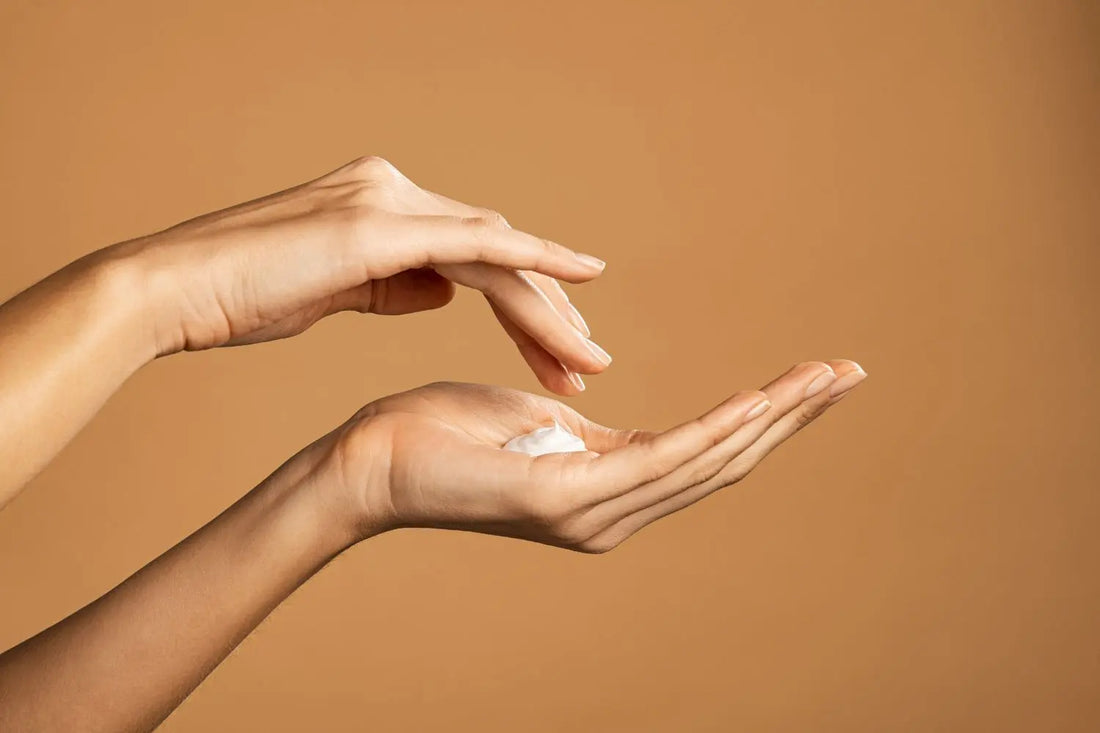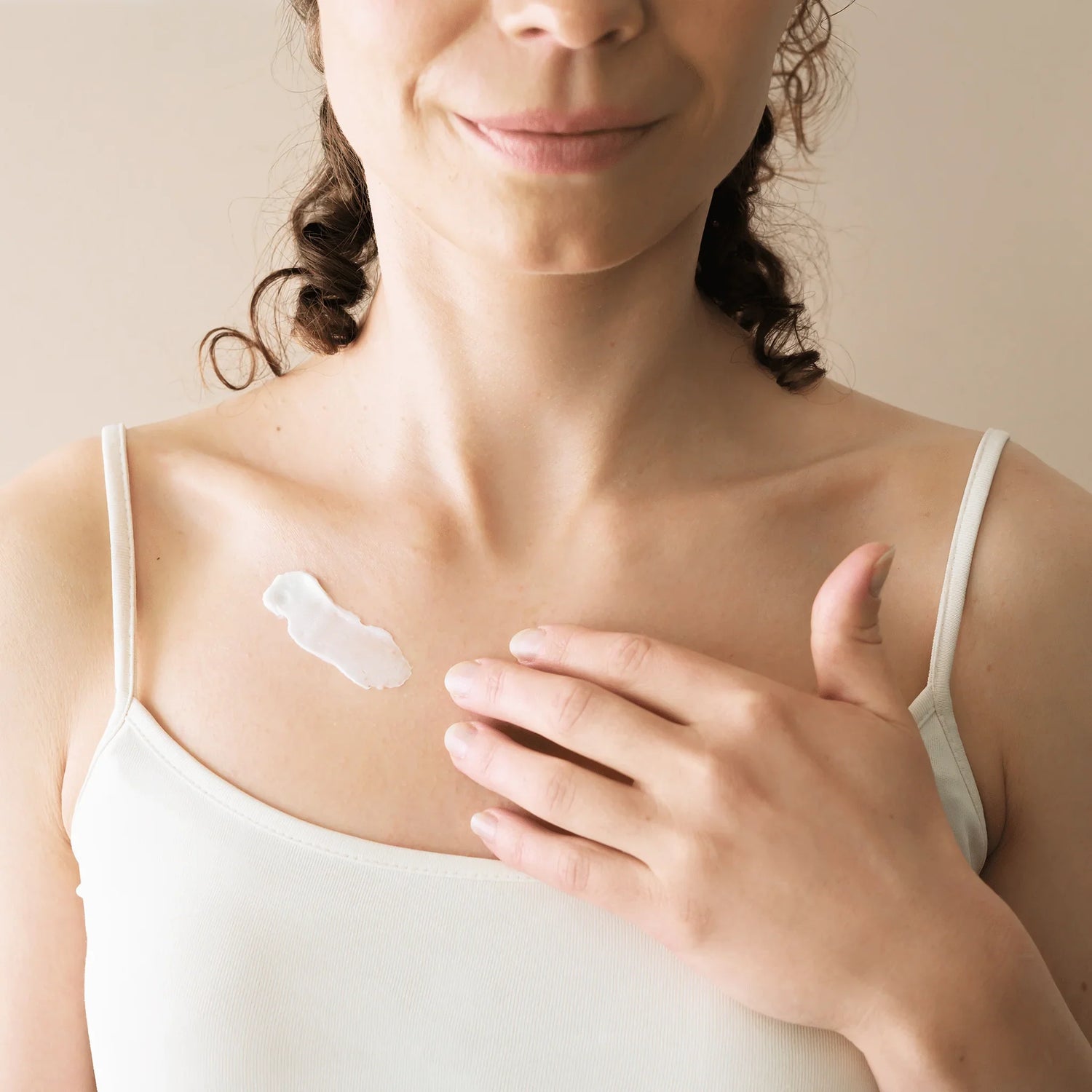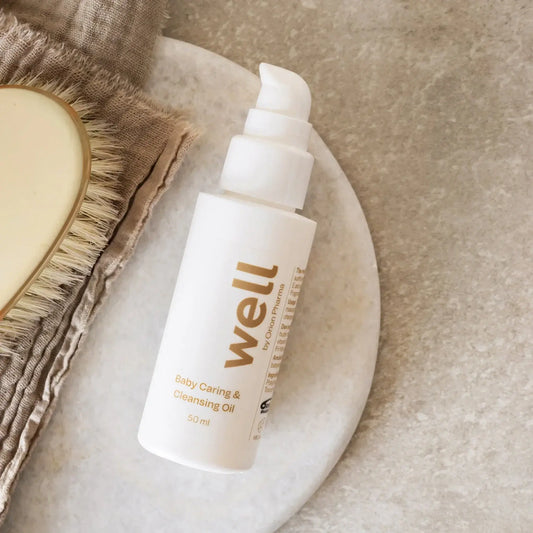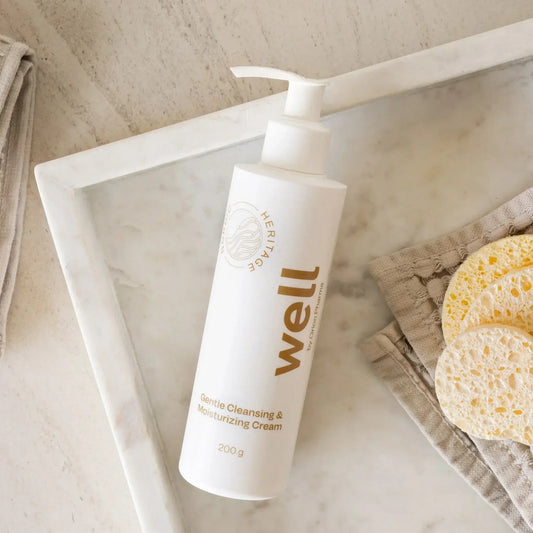
Skincare for atopic skin
Share
Atopic skin is sensitive, dry, and easily irritated, but with the right daily care, comfort, confidence, and healthy-looking skin are possible. This article focuses on gentle, everyday routines that help soothe discomfort and reduce the risk of flare-ups and support the skin’s natural protective barrier. Whether you're caring for your baby, your child, or yourself, these tips are designed to support the whole family.
What’s the difference between atopic skin and atopic eczema?
Atopic skin and atopic eczema are closely related, but they’re not the same. Atopic skin is a predisposition, not a disease - it can exist without visible eczema or inflammation. It’s naturally dry, sensitive, and prone to irritation because its protective barrier doesn’t function as it should. This makes it more vulnerable to external factors like cold air, friction, or harsh ingredients. Gentle, consistent care helps keep it balanced and comfortable.
Atopic eczema, on the other hand, is a chronic inflammatory skin condition. It causes flare-ups with symptoms like intense itching, redness, and inflammation. Eczema can affect people of all ages and often comes and goes in cycles. While atopic skin can exist without eczema, those with atopic skin are more likely to experience eczema at some point.
This article offers practical, soothing care tips for atopic skin, many of which provide comfort for dry and sensitive skin. If symptoms become more intense and start affecting sleep or daily life, it’s always a good idea to consult a healthcare professional. You’re not alone, and help is available.
The cornerstones of skincare for atopy-prone skin
The care recommendations in this article are lovingly crafted to support those living with atopic skin. They are based on the latest clinical research and expert consensus, including the European Guideline (EuroGuiDerm) on atopic eczema and trusted healthcare sources such as 1177 Vårdguiden (Atopiskt eksem). These guidelines reflect the collective wisdom of dermatologists, researchers, and patient advocates across Europe and beyond, ensuring that every suggestion is both safe and effective.
1. Daily moisturizing – simple creams are your skin’s best friend
Atopic skin needs daily moisturizing - even when it feels fine. Using simple, fragrance-free creams helps lock in hydration, reduce dryness, and protect the skin from irritation. These gentle products are essential for maintaining balance and comfort in sensitive skin.
As the seasons change, so should your moisturizer. In the summer, lighter creams are often enough to keep the skin hydrated without feeling heavy. In winter, when the air is colder and drier, creams with a higher lipid content offer better protection and help prevent moisture loss. Adjusting your skincare routine to the climate is a simple but powerful way to support your skin’s natural barrier all year round.
2. Cleansing with a cream – gentle washing without soap
Soap, harsh cleansers, and hot water can strip atopic skin of its natural moisture and protective oils. Instead, opt for warm water and gentle alternatives like cleansing creams, shower oils, or fragrance-free moisturizers suitable for washing. These help cleanse the skin without causing dryness or irritation. Read more about cleansing with a cream: Cream as a cleanser? What you need to know
Bathing may be gentler for the skin than showering – especially for young children. A short bath with a few drops of suitable oil can help soothe and hydrate the skin. Just remember to keep bath time brief and the water comfortably warm—not hot—to avoid further drying out the skin.
3. After shower care – lock in moisture while skin is damp
After showering, atopic skin is especially vulnerable to dryness. To protect and hydrate the skin effectively, gently pat the skin dry with a soft towel – avoid rubbing, which can irritate sensitive areas. Then, while the skin is still slightly damp, apply moisturizer to help lock in moisture and prevent it from evaporating, keeping the skin soft and comfortable.
4. Avoid irritants – everyday habits that make a big difference
Atopic skin can react strongly to everyday irritants. To reduce the risk of flare-ups, choose soft, breathable fabrics like cotton and avoid rough textures that can cause friction. After sweating – whether from exercise or warm weather – shower as soon as possible to remove sweat and prevent irritation.
Other helpful tips
- Use fragrance-free, gentle laundry detergents.
- Avoid harsh soaps and household cleaners and use gloves.
- Trim nails short to prevent scratching and skin damage.
Small changes in daily routines can go a long way in keeping atopic skin calm and comfortable.
Gentle choices for every skin in the family
Looking for a multitasking product for the whole family? Our Gentle Cleansing & Moisturizing Cream is more than just a moisturizer. Whether you’re after a full-body hydrator, a gentle cleanser, or an in-shower essential, this lightweight cream simplifies your routine and supports sensitive skin at every age.
Tip 1: Store in the fridge for cooling relief on itchy skin. (If itching becomes intense or starts affecting daily life, it is recommended to turn to a healthcare professional.)
Tip 2: Use to remove both water- and oil-based impurities, including SPF, from both the body and the face.
Another versatile option is our Baby Caring & Cleansing Oil - an everyday essential that softens and soothes even the most delicate areas. Don’t let the name fool you, while it’s designed with babies in mind, this gentle oil is perfect for the whole family.
Remember: every skin is unique
Caring for atopic skin takes patience and a bit of trial and error. What works for one person may not work for another – even within the same family. If symptoms become more severe or start affecting sleep and daily life, don’t hesitate to consult a healthcare professional. They can help you or your loved one find the right treatment and support long-term skin health.
Sources:
European guideline ( EuroGuiDerm ) on atopic eczema – part II: non-systemic treatments and treatment recommendations for special AE patient populations
Atopiskt eksem – böjveckseksem - 1177


